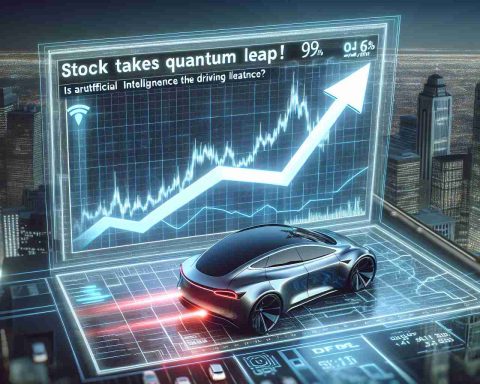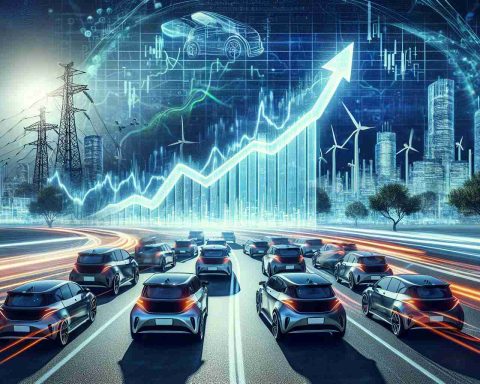The automotive giant Honda is treading carefully regarding its electric vehicle (EV) production plans. At a recent technology conference in Las Vegas, a senior official from the company expressed concerns surrounding the potential industrial policies of President-elect Donald Trump.
Noriya Kaihara, Honda’s Representative Executive Officer, highlighted the uncertainties that currently cloud the EV market. This careful approach extends not only to the production of electric vehicles but also to plans for establishing battery manufacturing facilities in Canada.
As the industry is poised for a major shift towards electric vehicles, Honda’s leadership aims to navigate through these uncertain waters with prudence. The remarks made by Kaihara suggest that until there is more clarity on the new administration’s stance towards the automotive industry, Honda will be adopting a cautious strategy.
The anticipated impact of government policies and regulations holds significant weight for Honda’s future investments in electric mobility. The company’s careful watch on the evolving political landscape underscores the intricate balance between innovation and regulation in today’s automotive sector.
As other automakers ramp up production of electric alternatives, Honda’s measured stance may shape its long-term strategy in the rapidly changing market. The quest for clarity remains crucial as the road ahead for EV production becomes more defined.
As Honda Navigates Regulatory Waters, What’s Next for Its Electric Vehicle Strategy?
Understanding Honda’s Approach to Electric Vehicles
Honda is embracing a cautious yet strategic mindset as it delves into the electric vehicle (EV) market amidst shifting political and regulatory landscapes. Recent statements from Noriya Kaihara, Honda’s Representative Executive Officer, clearly illustrate the company’s concerns about future industrial policies, particularly under the direction of President-elect Donald Trump.
Key Features of Honda’s Electric Vehicle Strategy
1. Cautious Expansion: Honda’s leadership is closely monitoring the political environment before making substantial investments in electric mobility. This measured approach is essential in a market characterized by rapid technological advancement and regulatory changes.
2. Battery Manufacturing Plans: Alongside electric vehicle production, Honda is evaluating the establishment of battery manufacturing facilities in Canada. The company recognizes that local battery production is critical for enhancing supply chain resilience and reducing costs for EVs.
3. Balancing Innovation and Regulation: An important facet of Honda’s strategy is navigating the relationship between groundbreaking technology and the regulatory framework that governs the automotive industry. The company is aware that incoming policies could drastically reshape investment decisions.
Pros and Cons of Honda’s Cautious Approach
– Pros:
– Risk Management: By adopting a conservative strategy, Honda can mitigate potential losses that could arise from sudden market shifts or policy changes.
– Time for Market Research: This cautious stance allows Honda to conduct thorough assessments of consumer demands and technological advancements before committing resources.
– Cons:
– Lagging Competitors: Other automakers are accelerating their EV initiatives; Honda’s slow pace could result in missed opportunities in the growing electric vehicle market.
– Potential Innovation Stagnation: A conservative approach may hinder Honda’s ability to innovate and bring competitive electric models to market quickly.
Trends and Insights in the Electric Vehicle Market
As the automotive industry leans towards electrification, several trends are emerging:
– Increased Investment in EV Infrastructure: Many countries are ramping up investments in charging infrastructure, which is crucial for EV adoption.
– Consumer Preference Shifts: A growing awareness of environmental issues and fuel economy is driving consumers toward electric vehicles.
– Technological Innovation: Advances in battery technology are leading to longer ranges and shorter charging times, making EVs more appealing to a broader audience.
Limitations of Honda’s Current Electric Vehicle Strategy
Despite its thoughtful planning, Honda faces limitations:
– Dependency on External Policies: The company’s future strategies are heavily reliant on government policies which can change unexpectedly, creating uncertainty.
– Competitive Disadvantage: Rival automakers such as Tesla and traditional giants like Ford and General Motors are rapidly innovating and rolling out new models, which could position them ahead of Honda in the EV race.
Conclusion: What’s Next for Honda?
Honda is at a crucial crossroads as it maneuvers through a landscape marked by political uncertainty and rapid technological advancements. By maintaining a cautious approach, the company hopes to establish a solid foundation for its electric vehicle endeavors. However, it must also remain vigilant and responsive to ensure it does not fall behind its competitors in the increasingly lucrative electric vehicle market.
For more insights on the automotive industry and electrification trends, visit Honda.













